While some exhibits seem a bit dated, fascinating art and artifacts remain
Sincerely, one of my favorite places in the world is the Milwaukee Public Museum (MPM), an institution established in 1882 that has grown into Wisconsin’s best and biggest museum of natural and human history. There is probably no place that makes me more nostalgic, having attended (probably) many dozens of times throughout the years. Not only did my parents used to take my brother and me there when we were still in our strollers, but my schools had regular field trips there, and now I take my own kids there when we’re in town. Sure, the museum has changed in some significant (and positive) ways throughout the years, and many more changes are promised, but a good number of the dioramas and exhibits are largely unchanged, for better or worse.
The main floor of the MPM holds probably the most beloved exhibits, including impressive displays of dinosaurs and prehistoric Earth, a butterfly atrium you can stroll through, and the Streets of Old Milwaukee, which transports visitors to nineteenth-century Milwaukee. While there is a lot of focus on the city of Milwaukee, the state of Wisconsin and the greater region, all parts of the globe are represented in immersive dioramas that, combined with the lighting, ambient sounds, and even smells, make you feel like you’re really there. In fact, huge and iconic dioramas can be found on all floors of the MPM. In what follows, I would like to focus on some of the lesser-studied exhibits at the MPM that feature representations of the Spanish-speaking world and pre-Columbian art and artifacts.
On the third floor of the MPM, visitors can see a large representation of a market in Antigua, Guatemala, along with other scenes from Latin America. The positioning of this particular scene is a bit awkward, as it’s kind of in between the Arctic and African areas, and I feel that some visitors could miss it or simply pass it by. I have some mixed feelings towards this market scene, as it depicts barefoot indigenous people, dressed in colorful, traditional clothing, one of whom is pulling a pig, which is a curious detail. The artistry of the surrounding architecture with its arches is impressive, as is the amount of detail, but it’s hard for me to avoid the conclusion that these people, referred to as “Indians” in the accompanying description, are being exoticized a bit. Still, the people do have a certain dignity about them, and the description provides relevant information about the history of the market, the crops sold, the traditional clothing used, and the frequent earthquakes that account for the deterioration of the walls. On the MPM website, this scene is described as a moment from the mid 20th century “frozen in time.”

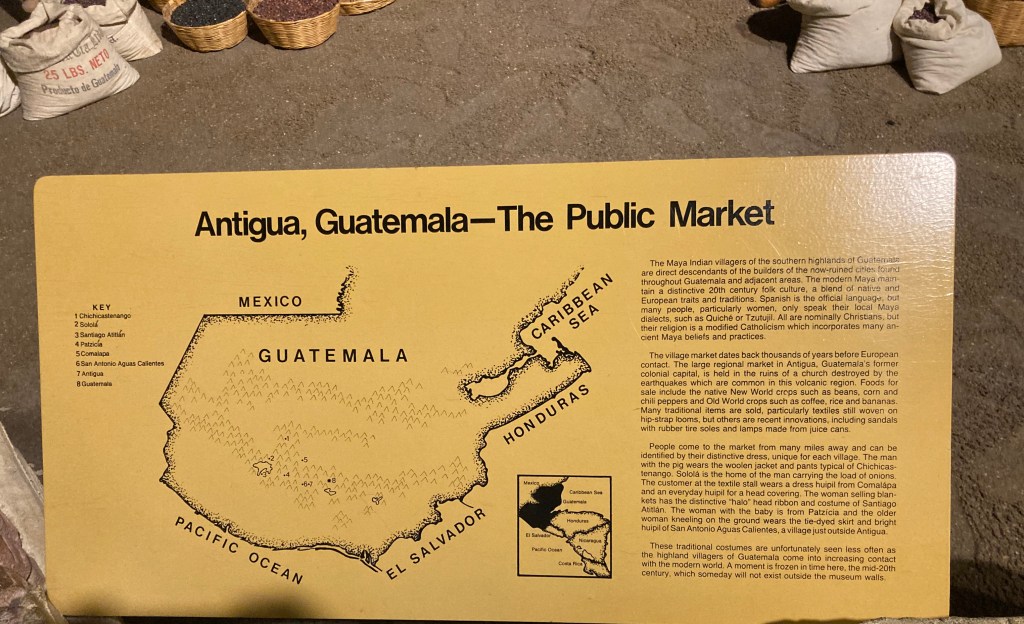
Near the market scene, there are scenes showing a Mexican plaza, Central American jungle, and a Lacandon Godhouse. The Mexican plaza is very attractive, as it features a cobblestone street, artificial (though lifelike) plants, a fountain, arches with artifacts from different Spanish-speaking countries, and walls with remnants of bullfighting posters. The music that can be heard is a mixture of songs featuring the marimba and others that sound reminiscent of what you would expect to hear at a bullfight. Of course, bullfighting is not a big part of modern Latin American culture, but these scenes, like the market scene, reflect earlier times or maybe even imagined times through the lens of the United States in the 20th century. Not all of the artifacts shown here are of equal value. I’m not sure, for example, why simple straw hats are included in one of the displays. Perhaps the scene here that is the most interesting is that of the Lacandon Godhouse. Although its representation is quite dark and a bit creepy, the description provided important aspects of the isolated, little known indigenous Landandon people.
While the scenes of Latin American culture reflect the (perhaps imagined) past, there are some displays, just before the Lacandon Godhouse scene, that attempt to educate visitors on contemporary Latin America, as shown in the images below. Despite the relatively small amount of space they occupy, these displays, which were in all likelihood created several decades after the other aforementioned representations of Latin American culture, are important because they give a sense of the current diversity of cultural products, practices, and perspectives of the region.
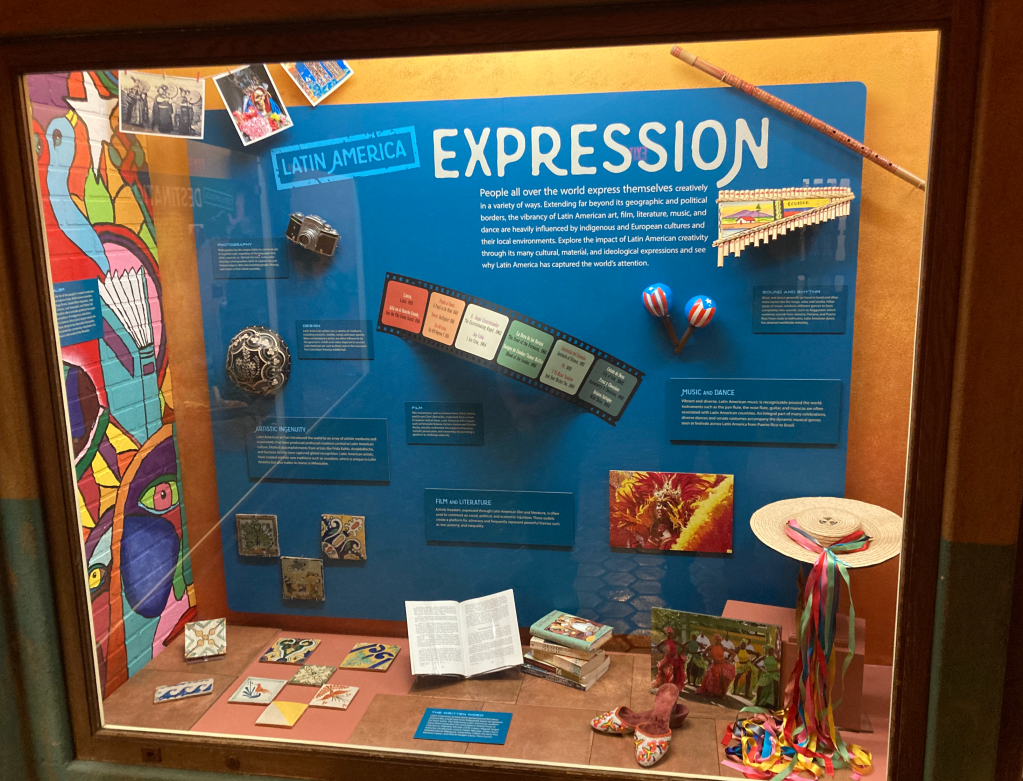
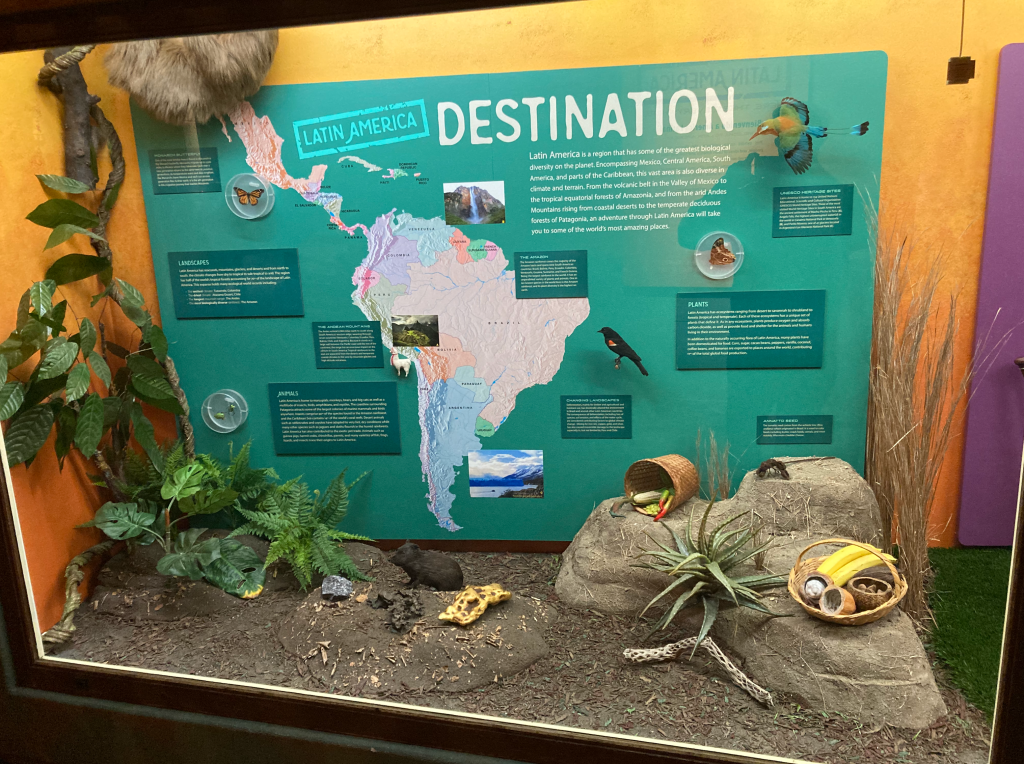
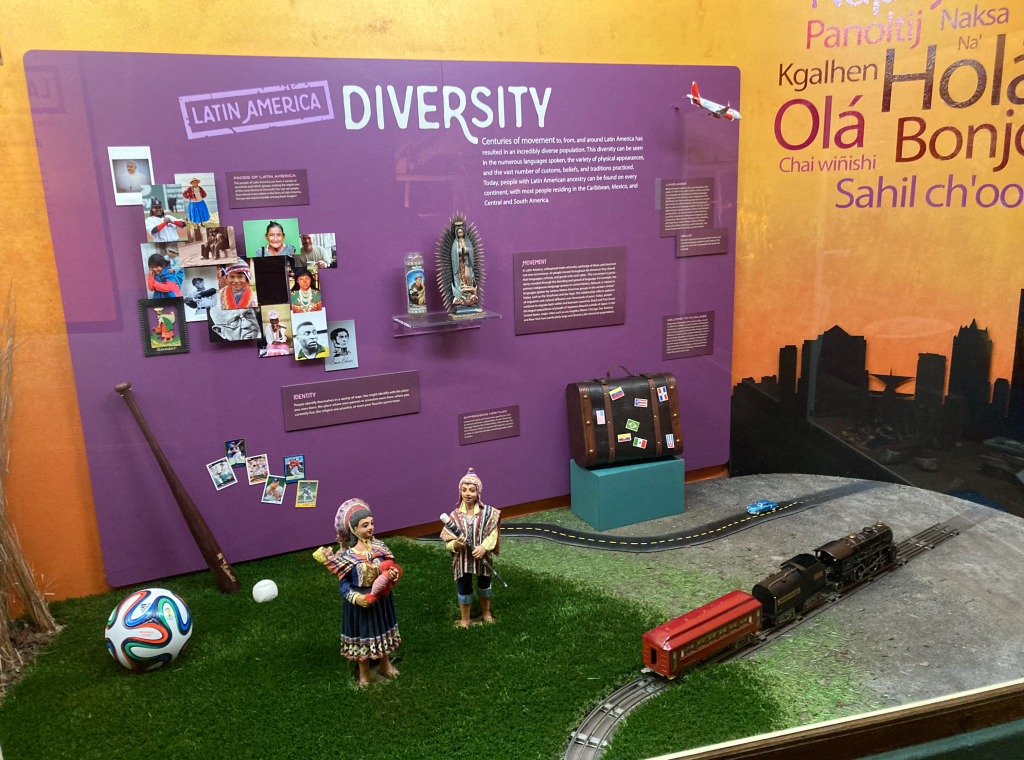
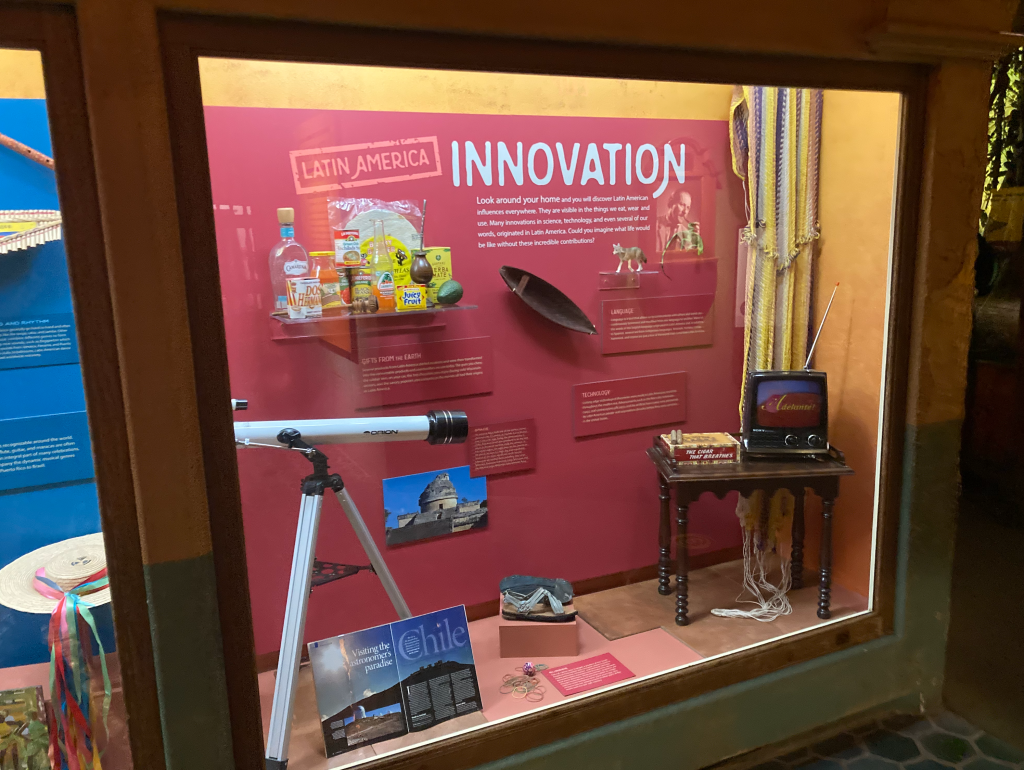
In terms of artifacts, the area on pre-Columbian indigenous groups is the most fascinating of the representations of Latin America. This section is accessible by a separate staircase that takes visitors to an area above the third floor. Here, we see many hundreds of artifacts that showcase indigenous pottery, textiles, gold, adornments, and sculptures. Some of the artifacts are repetitive in that there are multiple examples of very similar pieces and they are presented in such a way that makes it look this area hasn’t been modified in decades. There isn’t anything in terms of technology here to teach the visitors about the topic at hand, and the color palette that features different shades of brown and orange is right out of the 1970s. Nonetheless, the pieces themselves are breathtaking. I especially like the example of the quipu, an Incan device consisting of colored knotted threads that recorded information. I remember learning about quipus in graduate school, and it’s wonderful to see an authentic one first hand. Regarding authenticity, one display that caught my attention had to deal with the problem of forgeries of pre-Columbian artifacts; in that one display, only four of the many pieces displayed were authentic, and to the untrained eye it’s difficult to identify which was which. The other impressive aspect of the pre-Columbian exhibition is the fact that cultures from Mexico to the southern tip of South America are represented here. The photos below are only a small selection of what was displayed here.
There are two other areas of the MPM that are especially relevant to the study of the Spanish-speaking world. The first is the very large rainforest section on the first floor. The manmade rainforest here is modeled after Costa Rica, and it is immersive in virtually every possible way. All around you are the sounds of the rainforest and examples of creatures big and small that call the rainforest their home. A second floor allows you to visit the canopy and learn about its role in sustaining life. We even see a scientist’s lab located in the rainforest where samples are collected and analyzed. Some of the accompanying descriptions themselves in this exhibit are fading now, as the many visitors throughout the years have been opening and closing panels that reveal facts about the rainforest. Interestingly, the MPM founded a wildlife refuge in Costa Rica named Tirimbina, which now, unfortunately, is independently owned and operated. The focus here in this exhibit is on the important role the rainforest plays on the planet and the diversity of life it holds, so there isn’t a whole lot in terms of Costa Rican culture, but there are some nice details here and there that hint at it. I didn’t take photos of the rainforest exhibit on my latest trip, so I’ll simply share the video below from the MPM.
And the last part of the MPM that would be of interest to Hispanophiles is the casa española in the European Village, an exhibit on the first floor (next to the Streets of Old Milwaukee) that shows traditional European homes from times gone by. Pictures from the Spanish house are below. As you can imagine, they feature tiles that are typical in traditional Spanish constructions, religious imagery and statues, as well as a fountain and decorative ironwork on the windows and balcony.
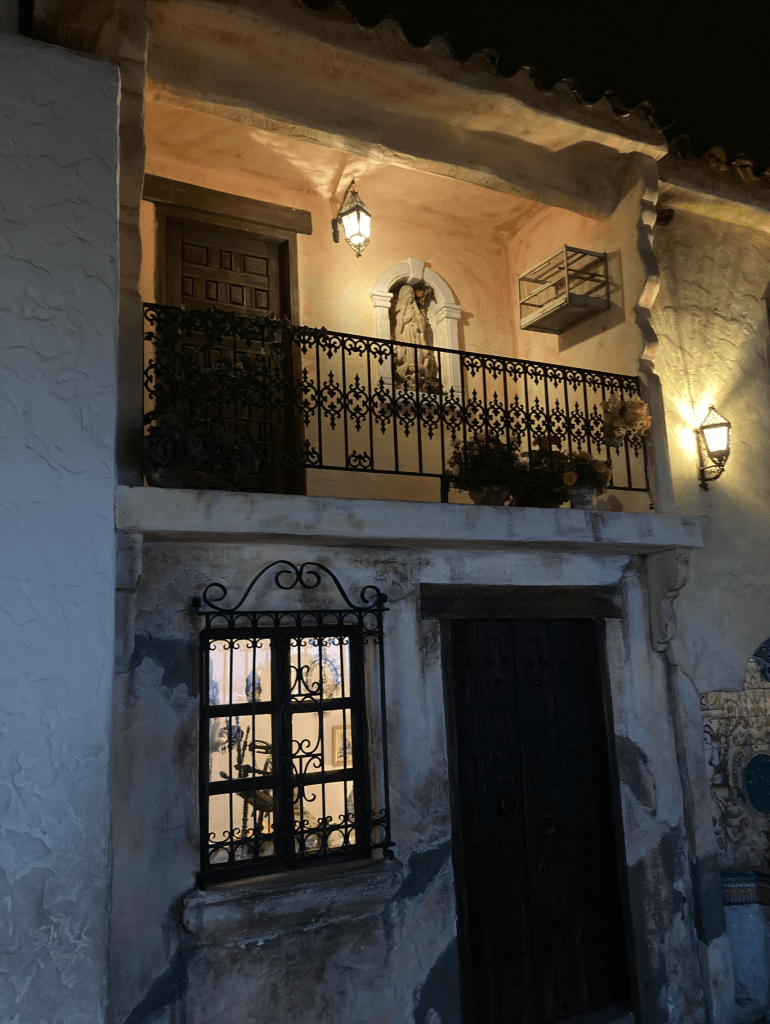

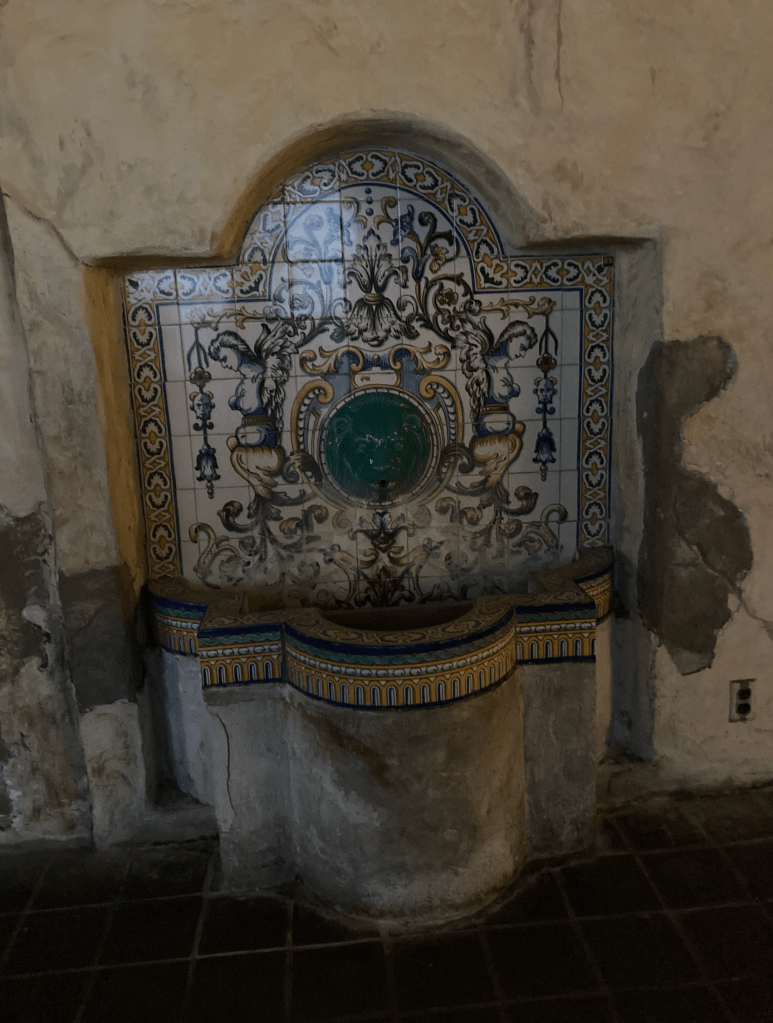
Yes, the Milwaukee Public Museum has some areas that could be described as dated, but I have to admit that I love them just as they are. Not only do its exhibits teach us about a myriad of cultural topics, but they teach us about how culture is represented, and how those representations have evolved over time. Somewhat recently, it was announced that the MPM would be moving to a new, smaller location due to seemingly unsolvable problems regarding the maintenance of the current building and the damage that has been caused to the artifacts it houses. While I can sympathize with these issues, I can only imagine that many of my beloved exhibits will be gone forever, and with them my memories of time spent with my classmates, parents, and children. This move will not happen immediately, fortunately for me, so I will make as many trips there over the next few years as I can.
If you plan on visiting the MPM, you should know that they do take Covid precautions seriously. Most visitors were conscientious in their mask use. Hand sanitizing stations are abundant. Click here for the MPM’s hours and ticket prices. Now really is the perfect time of year to go, as certain exhibits are decorated especially for the Christmas season.
Have you ever been to the Milwaukee Public Museum? Let us know what you thought of it in the comments below. And if you enjoyed this post, please consider sharing it on your favorite social media. ¡Gracias!
Related Posts:




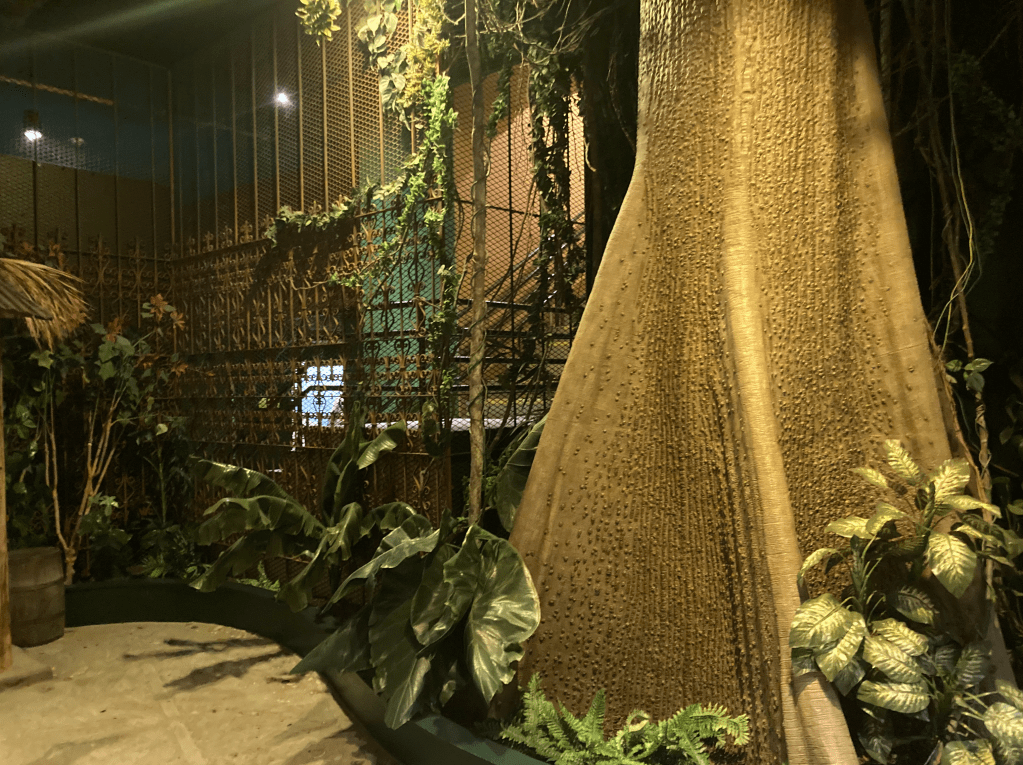
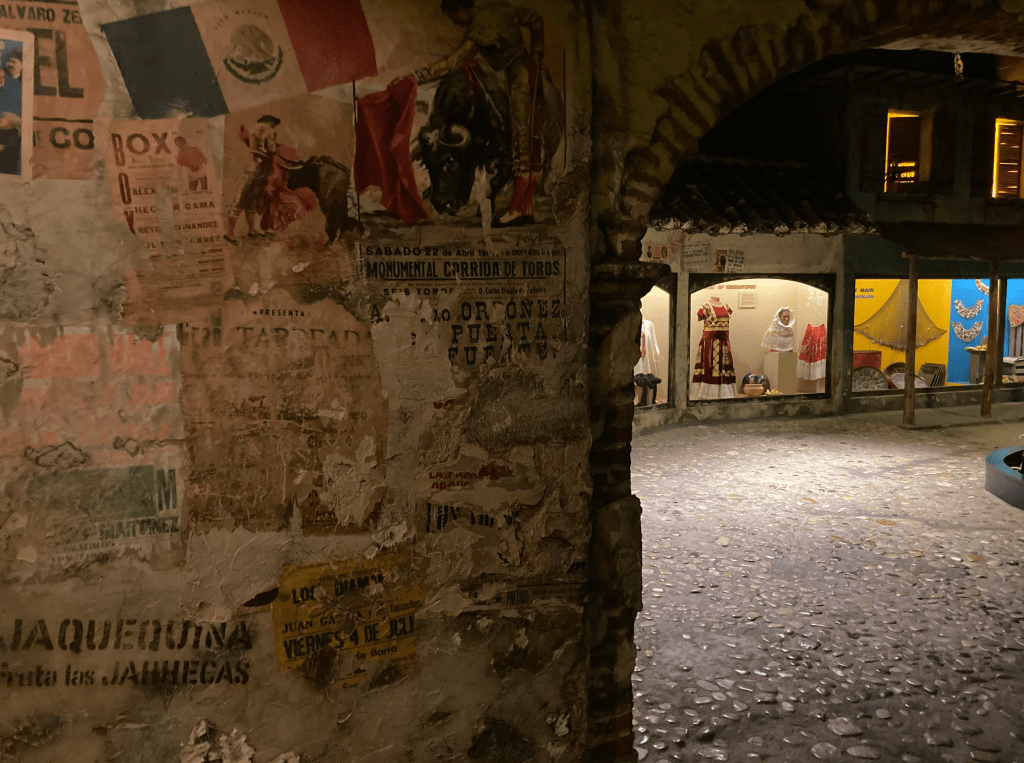
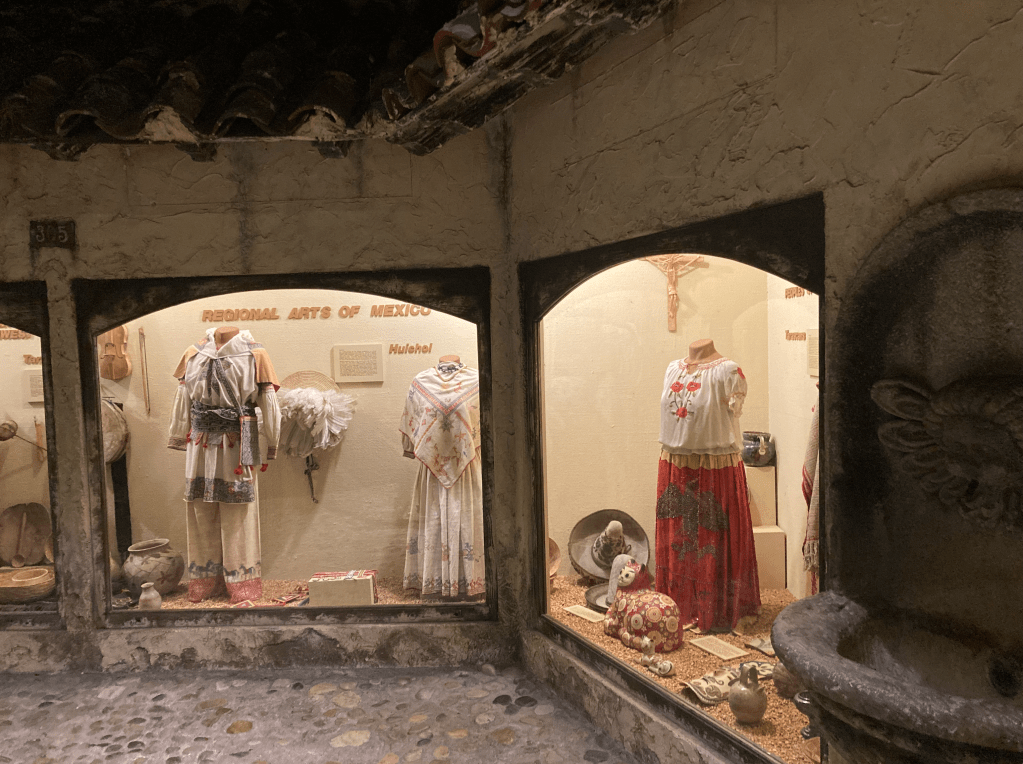
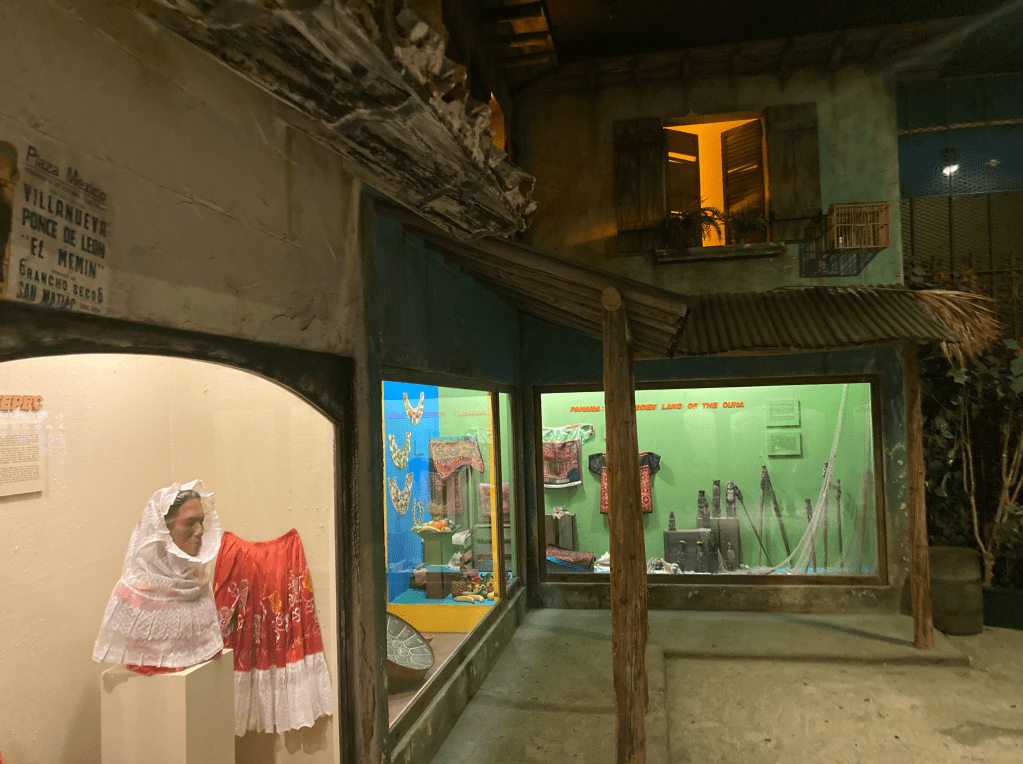
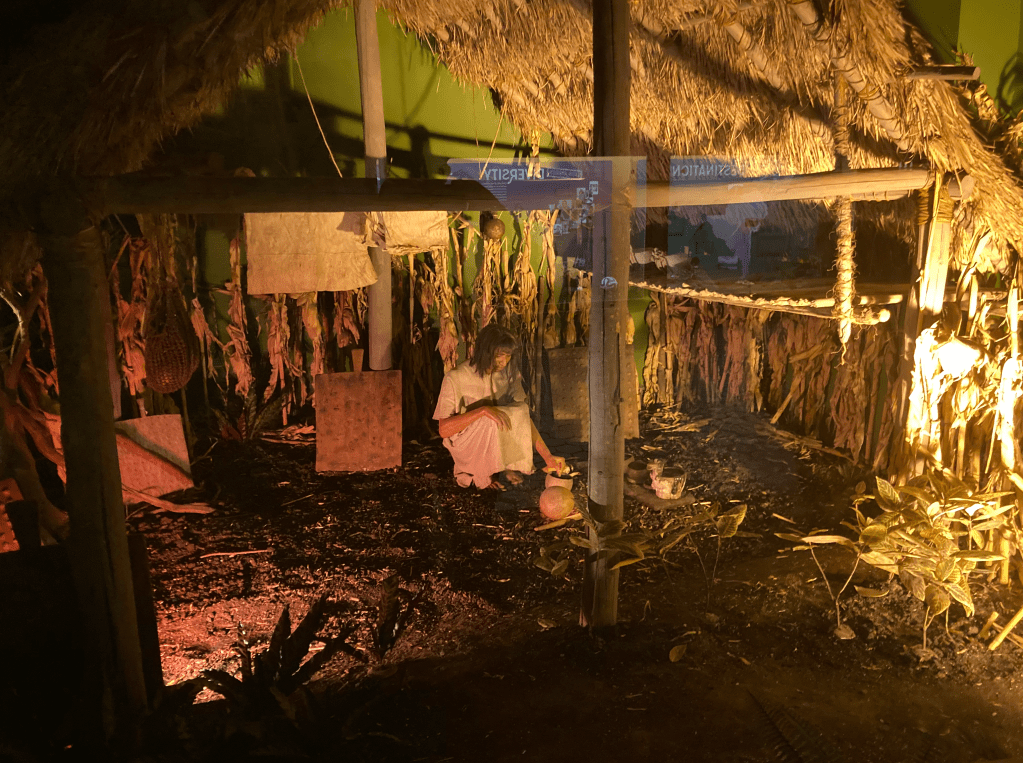

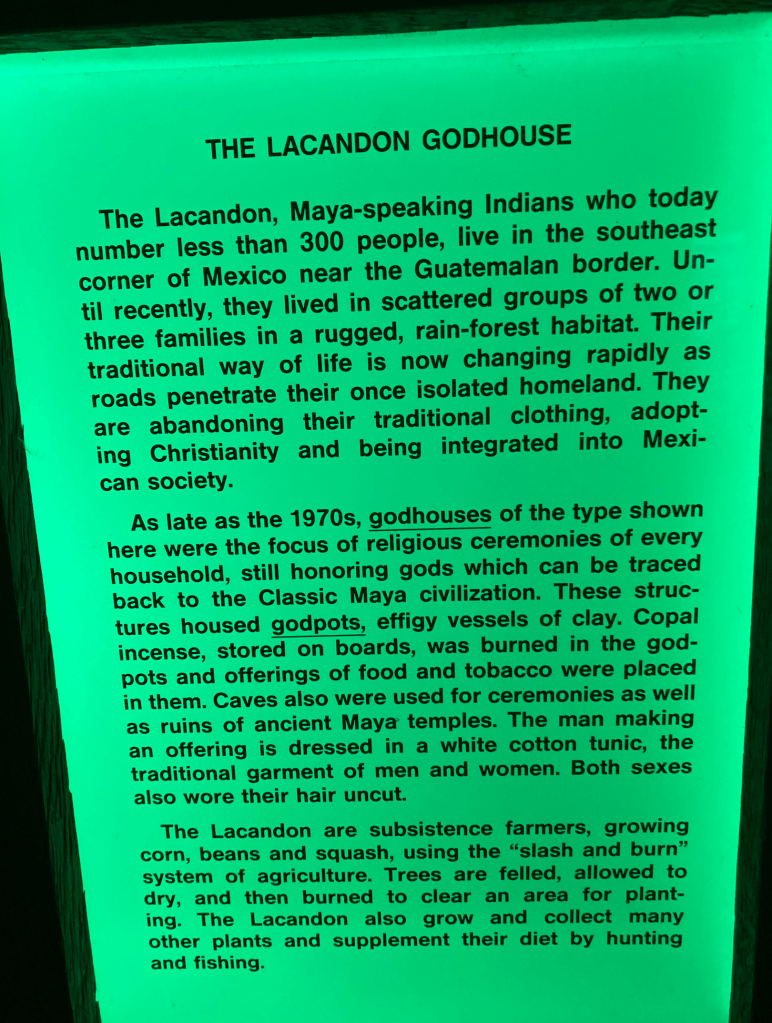
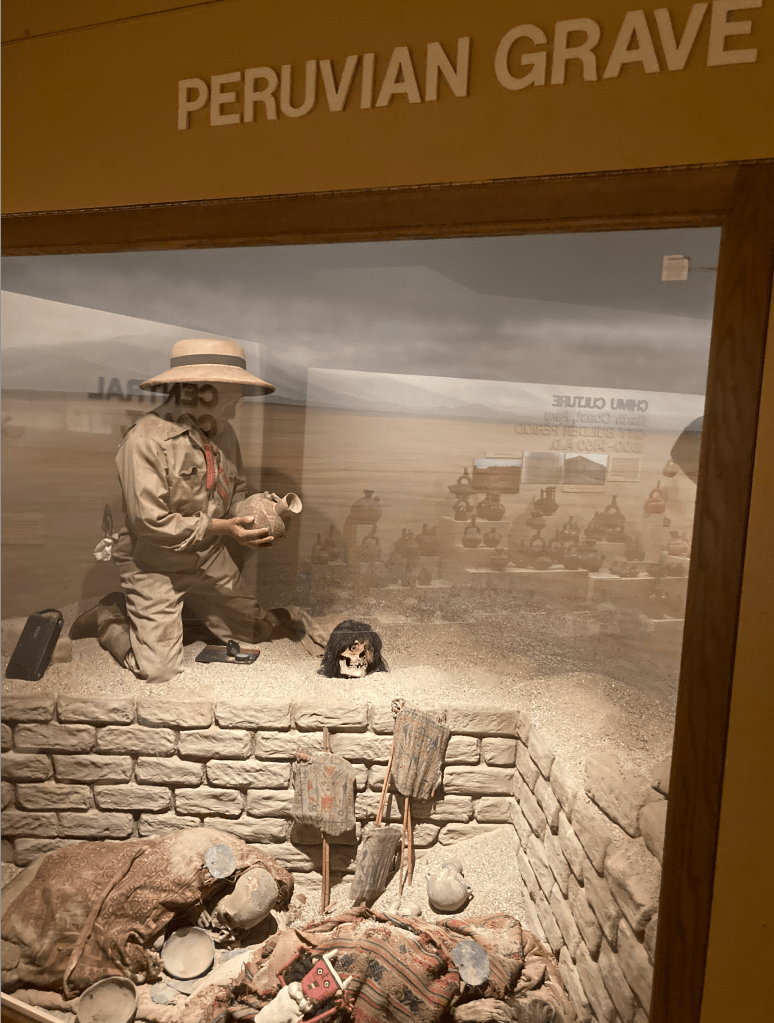







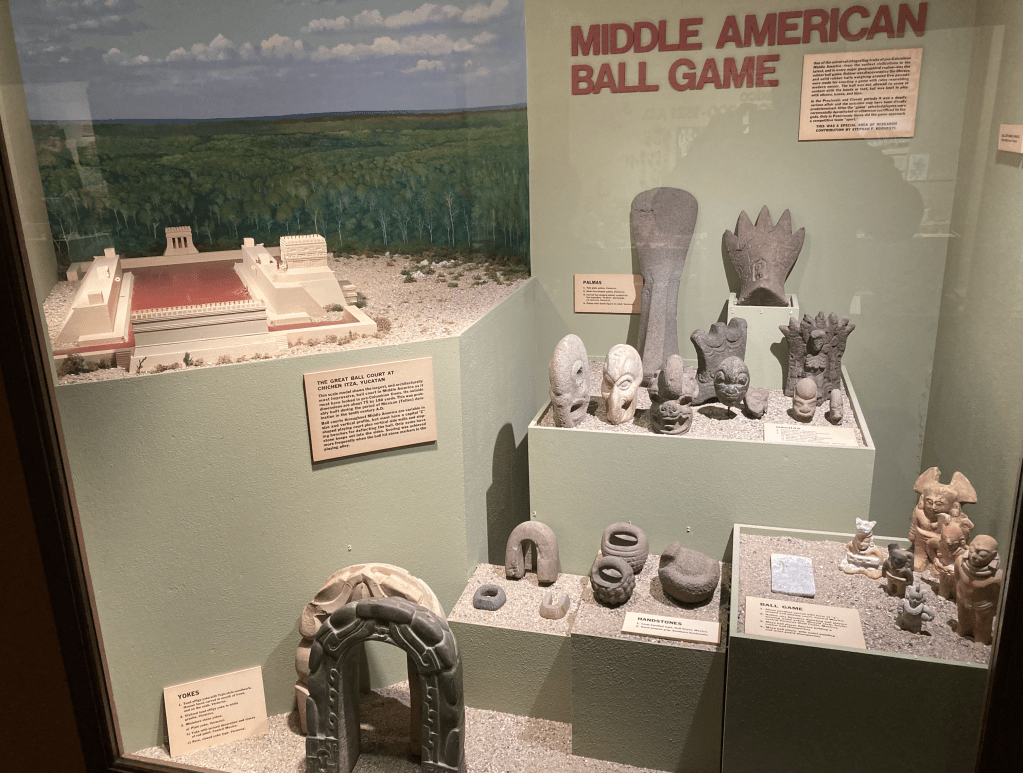


I’ve never been to Wisconsin but it looks like you have a nice resource there. That Mayan tomb is particularly striking!
LikeLiked by 1 person
Hi, Kevin. It really is a fun museum. There’s so much to experience. Thanks for visiting!
LikeLike